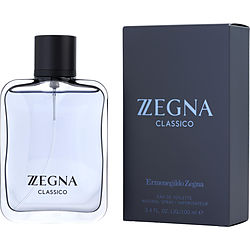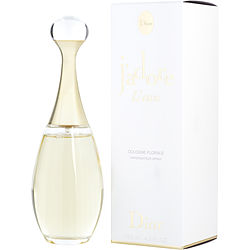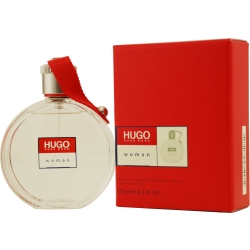You probably know a handful of people whose scents have stayed with them for so long that they have become a part of who they are. That Zegna scent
which always baffled you on that guy who later became your boyfriend. Your mum who smelled of vanilla and your ballet teacher who smelled ... French? This is what is called a signature scent and our goal today is to help you sniff out your perfect scent which will become an essential part of your calling card ;).
So on to the technical part, you should know that there is a fragrance classification and essentially all fragrances fall in one of four categories and a total of 14 subcategories. In this classification scheme, Chanel No.5, which is traditionally classified as a "Floral Aldehyde" would be located under Soft Floral sub-group.
Wikepedia lists the sub-groups of the fragrance wheel as follows:
- Floral (Floral + Fresh Notes). Main notes include fresh-cut flowers.
- Soft Floral (Floral Notes). Main notes include aldehydes and powdery notes.
- Floral Oriental (Floral + Oriental Notes). Main notes include orange blossom and sweet spices.
- Soft Oriental (Oriental + Floral Notes). Main notes include incense and amber.
- Oriental (Oriental Notes). Main notes include oriental resins and vanilla.
- Woody Oriental (Oriental + Woody Notes). Main notes include sandalwood and patchouli.
- Woods Main notes include aromatic woods and vetiver.
- Mossy Woods (Woody + Oriental Notes). Main notes include oakmoss and amber.
- Dry Woods (Woody Notes). Main notes include dry woods and leather.
- Aromatic Fougère (Fresh Notes). Main notes include lavender and aromatic herbs. This universal fragrance family includes elements from different families: the freshness of from the Citrus family, floral notes of lavender, the spicy-sweetness of a Floral Oriental, the ambery depth of an Oriental and the Mossy Woods warmth of sandalwood and oakmoss.
- Citrus (Woody + Fresh Notes). Main notes include bergamot and other citrus oils.
- Water (Fresh + Floral Notes). Main notes include marine and aquatic notes, generally from the chemical calone.
- Green (Fresh + Floral Notes). Main notes include galbanum and green notes.
- Fruity (Fresh + Floral Notes). Main notes include berries and other non-citrus fruits.
Fragrances for men include those and also other more masculine scents like leather, tobacco, musk, and mosses.
So the second tip is bear in mind that it might be a good idea to have a couple of fragrances to compliment the season and the mood you are in. Remember how fresh cut grass and vanilla reminds us of summer and gingerbread of Christmas. You can evoke those same memories with your own scent.
I'm afraid our third tip is also a little technical but it is important to know a little terminology and the different perfumes.Absolutes Pure: natural extracts and oils from flowers and other vegetable materials. Very expensive for a small amount. Example: pure rose oil.
Note: An odoriferous element in the perfume or cologne. When we smell a composed fragrance, we smell different notes within it. When the first scent — or top note — dissipates, we smell the middle note, also known as the bouquet. As that fades, we are left with the basic note, which is the third element of a composed fragrance. It’s like a symphony, right? So for our forth tip, don’t commit to a scent until you smell the final note.
Eau de Cologne: is three to five percent oil in a mixture of alcohol and water. It tends to be lighter and refreshing, typically with a citrus oil component.
Eau de Toilette: Containing about the same amount of perfume oil or a little more — somewhere between four and eight percent — than Eau de Cologne, Eau de Toilette is mixed with alcohol instead of water.
Eau de Parfum: A higher percentage of perfume oil — roughly 15 to 18 — mixed with alcohol makes up Eau de Parfum. It is more expensive than Eau de Cologne and Eau de Toilette.Perfume is 15 to 30 percent perfume oil mixed with alcohol. Because it contains such a high percentage of perfume oil, it is far more expensive than Eau de Cologne, Eau de Toilette, or Eau de Parfum.
Our body chemistry is unique to every individual, hence the same perfume could smell completely differently on two different people. The smell would be different in the bottle than on the card. The fifth trick is to spray on the card wait for 5 to 10 minutes and if you still love the smell only then spray it on your skin. If you skin is dry, the scent more quickly than on an oily skin, so in this case a highlly concentrated perfume will work better. One other trick, and that brings us to number six is to shop for scent on a warm day or later in day as our sense of smell is sharper later in the day. Some perfumeries will have coffee beans spread around, take a sniff to clear your olfactory perception - nevertheless, don't try a bunch of fragrances at one go, limit your testing to two or three and spread your testing over a few trips to the perfume counter, and that would be tip number seven.
Choose complementary toiletries as most toiletries have their own scent which could interfere with your fragrance and for tip number eight apply the perfume to these key areas;-
- wrist
- center of neck
- behind the ear
- behind the knee.
Don't over do it, death by perfume is still death ;). So what is your signature scent? Share with us your favourite perfume.



No comments:
Post a Comment